NJ Shore Shark Attacks 8 years ago
June 16, 2016
The New Jersey shark attacks of 1916 are the stuff of legend. To this day people speculate as to whether there was one shark or multiple and which species of shark was (or were) responsible.
The weather is always talked about as a contributing factor, mainly the unbearable heat. So as the 100th anniversary approaches (July 1-12), I rolled up my sleeves and unearthed some old weather records.
The Weather
June 1916 featured a mean upper level trough centered over the western Great Lakes.
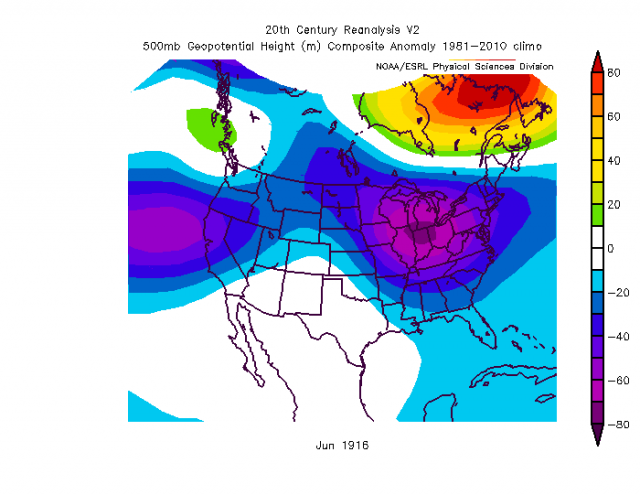
This resulted in cool mean surface skin temperatures:
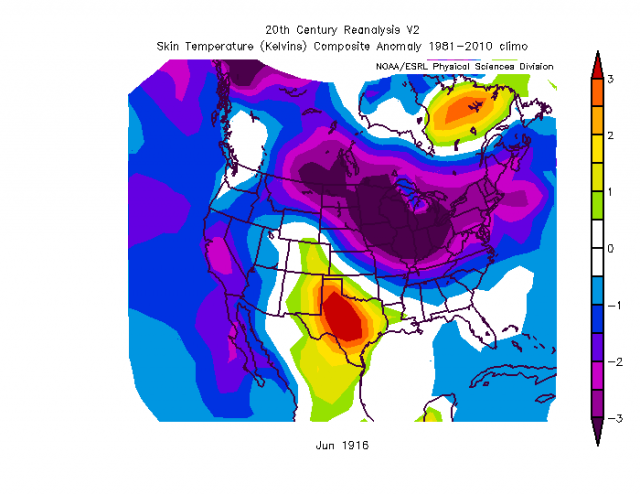
Notice the skin temperatures off the Mid-Atlantic Coast were cooler than the long term average.
Of course weather records from 100 years ago are hard to come by. The above maps are monthly composites from the 20th Century Reanalysis dataset. New York Central Park has very detailed surface records, so at least we can find some reference point in the vicinity. Here was the month of June:
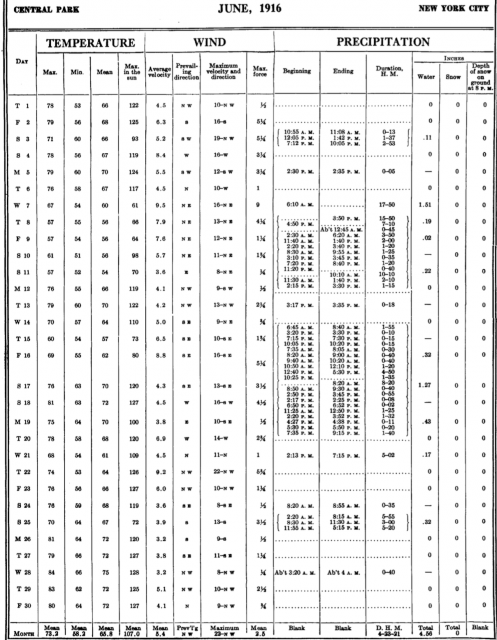
For the most part, it was rather cool, with some typical low 80s during the last week of the month.
July:
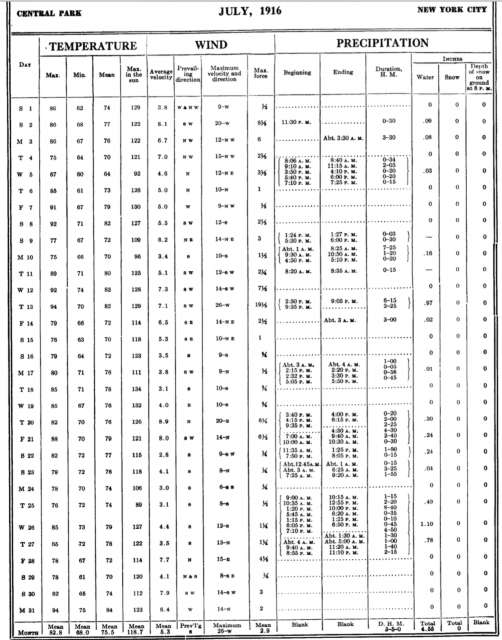
Now don't get me wrong, I shouldn't really talk as I type this from an air conditioned house, but climatologically the heat wasn't that bad. Granted people must have been uncomfortable without air conditioning, but this was typical June and July weather (if not a little cool at times) for the New York metro area.
As an aside, they used to take the temperature in both the shade and the sun. Here is what the hourly temperatures in the sun looked like from July 1916:
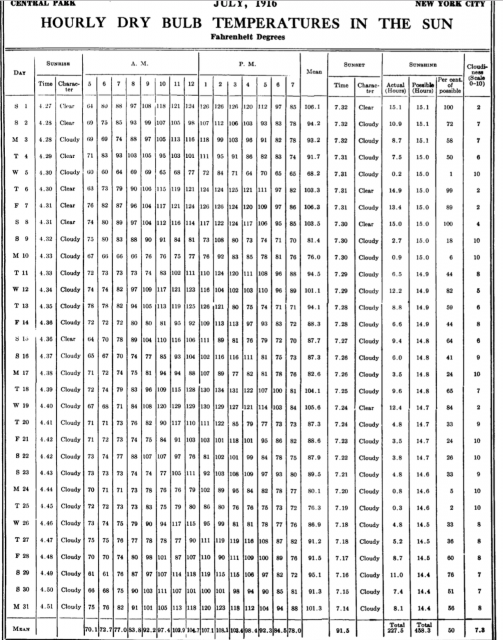
Now 126°F in the sun on July 1 can be considered hot to the average person. However, it is still typical weather for early July in the northern Mid-Atlantic.
From a broad perspective, the month of July looked like this in the upper levels:

The July surface skin temperatures:
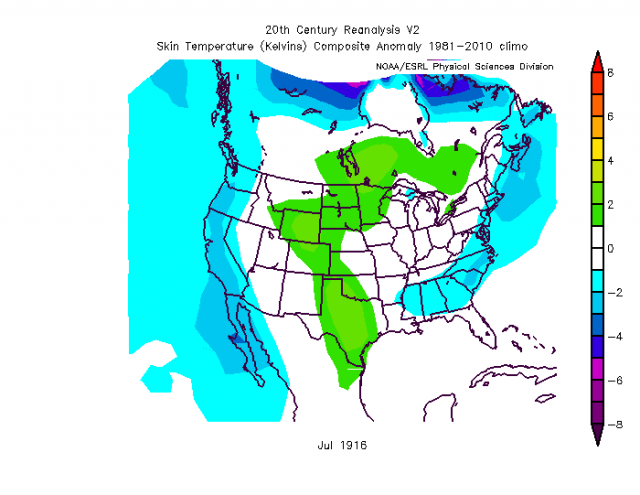
The Attacks
The first shark attack occurred on July 1 in Beach Haven, which is about 80 miles to the south of New York City. Temperatures in the mid 80s in New York City likely translated to temperatures in the 70s down there on Long Beach Island. Again, typical early July weather.
The second attack occurred in Spring Lake, roughly 35 miles to the south of New York City on July 6, 1916. That day was in the lower 90s, but right on the beach it was probably a little cooler, so everyone flocked there to cool down. Surf temperatures were probably in the 60s, as is typical for the region in early July.
The Matawan Creek attacks of July 12, logistically speaking, are the most puzzling. Knowing the area firsthand, it is awfully shallow in there during low tide. Somehow, the shark must have ridden the high tide into the brackish wetlands in the western portion of Raritan Bay. That day was also hot (lower 90s) and the extra human activity in the water made an attack more likely.
Conclusions
While an ichthyologist would be able to tell you more than a meteorologist about why a shark would venture in so close to shore, this meteorologist speculates that it (or they) was (were) probably hungry and/or lost. It would be very interesting to see if offshore currents may have changed the patterns of the shark's typical prey. It doesn't appear that the weather or water temperatures leading up to the July 1-12 shark attacks were particularly anomalous, though the inland heat drew an increased number of people out to the beach. Otherwise, it was just a random occurrence that hasn't repeated in the last 100 years.
Don't blame the weather for this one!
Thomas E. Downs, V is a meteorologist at WeatherBell Analytics, LLC.